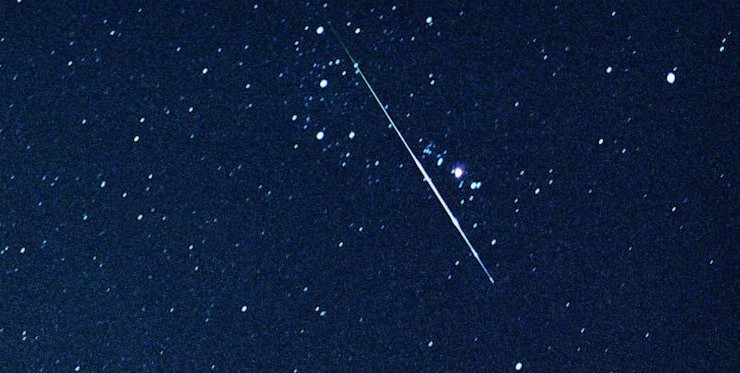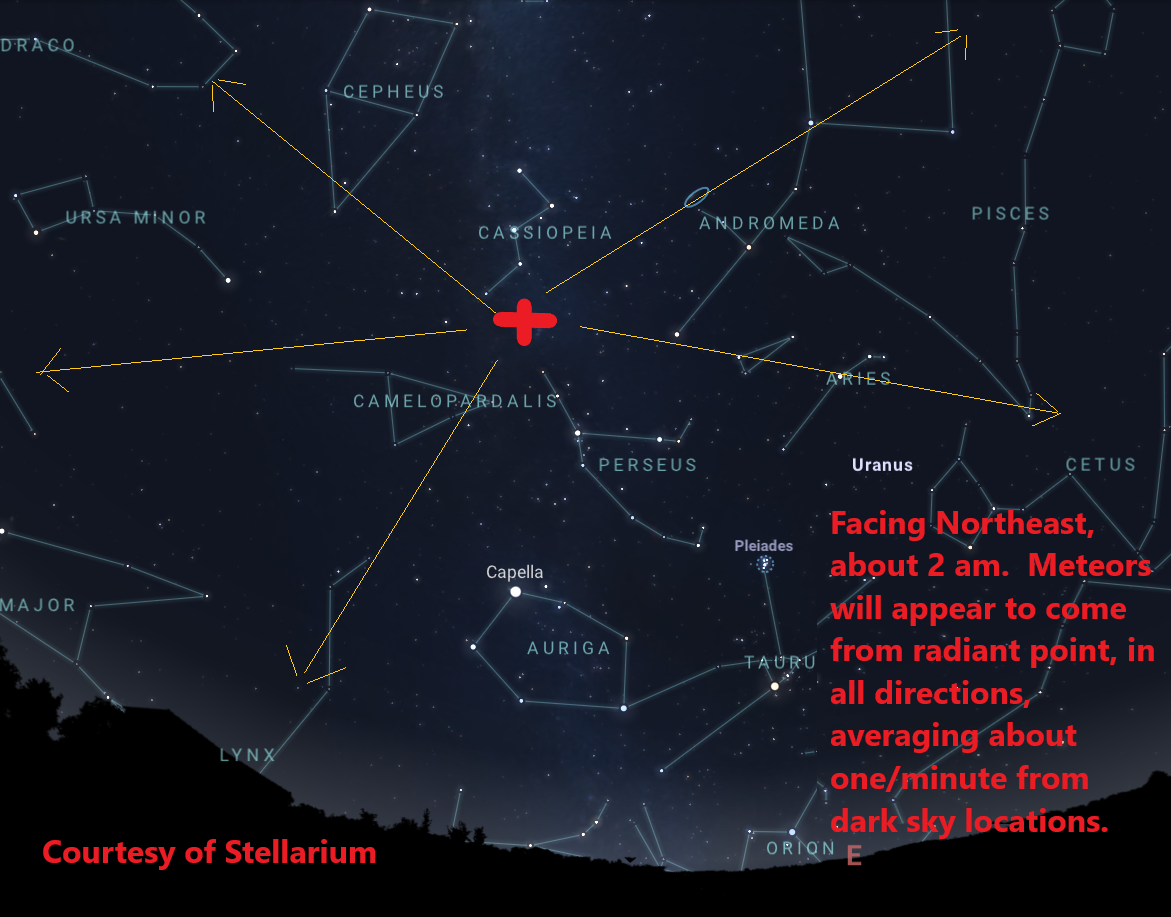CATCH A FALLING STAR!
Stargazers around the world owe a debt to Comet Swift-Tuttle. As it orbits our Sun every 133 years, it leaves debris behind, and each year, the Earth intersects the comet’s orbit around August 12, producing the annual Perseid Meteor Shower. Small motes of dust and rock from the comet collide with Earth’s atmosphere and burn up, producing fast moving trails of light across the sky, often called “falling” or “shooting stars.” Although a couple of other meteor showers may exceed them in numbers, the Perseids are the undisputed champ for northern hemisphere viewers because they take place in a season of the year when it is comfortable to go outside for an extended period. The Perseids also seem to have a greater number of bolides, or fireballs caused by slightly larger bodies burning up, than any other meteor shower.
2021 offers near-ideal conditions to view the Perseids, with the thin crescent moon setting in the west in the early evening and posing no interference. The best time to look will be between midnight and dawn on Thursday morning, August 12. I have seen about fifty meteors per hour from the Perseids when viewing from a dark site, which is highly encouraged, as light pollution will take a large toll on the numbers. If it looks like the 12th will be cloudy, the mornings of the 11th or 13th will still be worthwhile, with fewer and fewer meteors seen as you move farther away from the morning of maximum.
When to look? The meteors appear to come from a point in the constellation Perseus, which is on the northern horizon before midnight, so very few meteors will be seen before then. The radiant point rises higher in the northeast by about 2 am and is almost overhead by the time dawn begins around 4:30 or 5 am St. Louis time, so this would be the best time to look. Bring a sleeping bag or lawn chair, and simply look up. If you have to stay in the city, look at the darkest section of your sky, but if you can find a safe spot out in the country, you will see many more meteors. Other tips would be to bring bug spray and a jacket or sweatshirt, as it can become chilly sitting still in the cool night air. Since meteors move so swiftly across the sky, binoculars or telescopes are useless. If you have a camera that can take a minute or so time exposure, place it on a tripod and set your wide field (not telephoto) lens to its most open setting. Take some practice exposures and experiment with the ISO dial on your camera to find a setting in which the sky will remain fairly dark for a one minute exposure. If you take enough exposures, you may be lucky enough to catch a meteor or two, like this:

A Perseid meteor in the constellation Orion. Image by our Sky Ranger
The meteors will seem to come in fits and starts, so there might be none for a long time, and then suddenly two or three flash across the sky in just a few minutes. Every now and then, a sporadic meteor or one from a minor shower might be seen, that cannot be traced back to the Perseid radiant. Take a look for yourself! If you see any Perseids, e-mail me or send a picture to richard_fefferman@nps.gov. Don’t wait until next year- in 2022 the Moon will be full the night before maximum, blotting out all but the very brightest meteors.
 Although a few meteors will start to become visible in the late evening, the Perseid radiant point doesn’t rise high enough for best viewing until well past midnight. The best morning to view will be August 12, with progressively fewer meteors seen each morning farther from then.
Although a few meteors will start to become visible in the late evening, the Perseid radiant point doesn’t rise high enough for best viewing until well past midnight. The best morning to view will be August 12, with progressively fewer meteors seen each morning farther from then.Our next Gateway to the Stars program will take place at 6:30 pm on August 14. Join Rangers Melissa and Richard for our annual Kids Explorer Night, featuring “Star Light, Star Bright,” a kid friendly tour of the night skies. This will be followed by our Junior Ranger Night Explorer workshop, in which 5-12 year olds can earn a special patch. Because of the limited capacity of the Education Classroom, priority will be given to those who make free advance reservations. Go to: Gateway Arch : Ticket Selection or e-mail richard_fefferman@nps.gov in order to make arrangements. Weather permitting, there will be free telescope viewing out on the West Entrance Plaza from 8-10 pm, led by volunteers from the St. Louis Astronomical Society.
